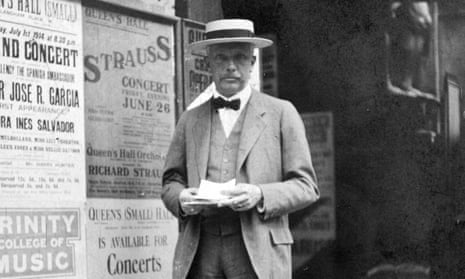The recent Strauss Festival in London gave English music lovers in England the first opportunity of forming an idea of his powers as a whole and of realising how logical and consistent has been his development from the day when he wrote the Burieske for piano, twenty years or so ago, down to Feuersnot, which was finished two years ago. In the eighteen years Strauss has worked and lived through sixty years of musical history at least, and if a capacity for development is the mark of a great artist, then Strauss must be one of the greatest in the history of the art.
He began, as his early works prove, as an ardent follower of the classics, with a technique both in respect of form and orchestration that was wonderfully complete. Before he had reached his twentieth year he had nothing more to learn, and his F Minor Symphony is in this respect remarkably mature. He also had a gift of fluent and graceful but not remarkable melody.
His conversion to modern conceptions of the art implied in the phrase “music as expression” was due in the first instance to Alexander Ritter, and its results are just seen in Aus Italien, which, it should be remembered, was composed before the extremely Schumannesque Violin Sonata.
As regards picturesqueness of orchestration, he has done nothing more beautiful and original than the movement An Sorrentos Strand in Aus Italien. In that respect it justifies the title he is fond of bestowing on it — “my first work.” But in this work considerations of purely musical design are still paramount, and it exemplifies the theory of descriptive music as bequeathed to the world by Berlioz more even than that formulated and carried into practice by Liszt.
In Macbeth, Don Juan, and Tod und Verklärung we see him becoming more Lisztian in his view, and more particularly we observe him gradually illustrating types rather than individuals. The parallel between Tod und Verklärung and Liszt’s Tassa is obvious, and has often been pointed out. In orchestration the influences of Berlioz, Liszt, and Wagner gradually become merged into a new whole, and that new whole is Strauss’s own orchestral idiom, of which the distinctive features are the independence given to each separate instrument, and the consequent extension in the freedom of polyphony.
But it is not till later that he wrote music which has to be listened to “horizontally” rather than “vertically” – that is to say, music in which we ought to attend to the simultaneous flow of themes rather than to the harmonic combinations at any given point. And simultaneously he developed the chromaticism of his themes to a point not reached or aimed at by any other composer. It is the last thing that one learns about him – this originality in his melodic inspiration and the newness of the theory on which it is based.
